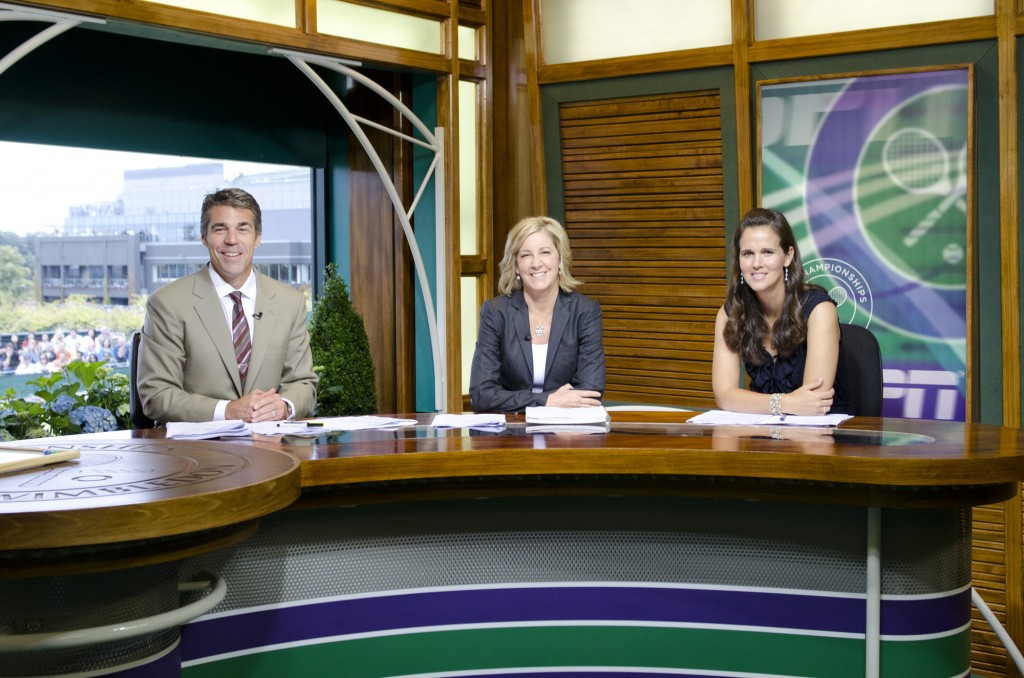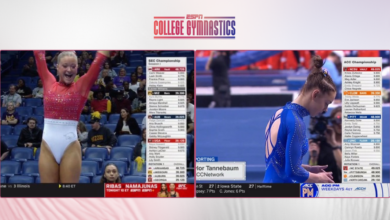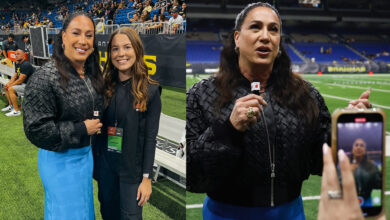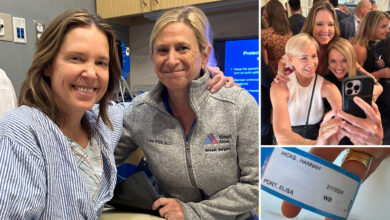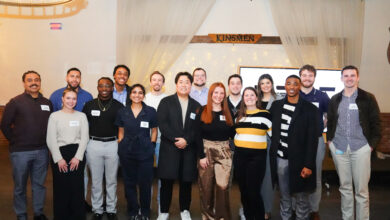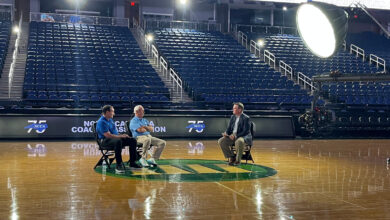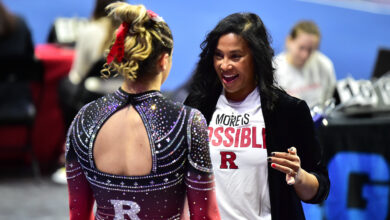Evert’s return to Wimbledon
L-R: Chris Fowler, Chris Evert and Mary Joe Fernandez
LONDON — Chris Evert, one of the most accomplished champions in tennis history with 18 major single titles and the best all-time career match winning percentage, has returned to sportscasting after a 10-year hiatus, joining ESPN for Wimbledon and the US Open.
Why return? How’s the game changed? Those questions and more are answered in a conversation held in ESPN’s offices overlooking Court 18 at the All England Lawn Tennis & Croquet Club.
FR: Why return to television?
CE: I went into TV right after my playing career ended and did it for 10 years. Then I decided to be a full-time mom. But now my boys are 19, 17 and 15 and they don’t need me around as much…in fact, I’m afraid they don’t necessarily want mom around all the time! They live with me in Florida all winter, with their dad nearby, and with him in Colorado in the summer where I have a place very close. So I see them every day, but I after 10 years I missed television, and I think I still have something to offer. In fact, maybe more than before. Now I bring the perspective of a player, of a coach at the academy I run, and as a viewer for a decade.
Joining ESPN is like a fun reunion. I worked with Dick Enberg and Hannah Storm, who is one of my best friends, at NBC. Pam Shriver and Mary Joe Fernandez were my friends from the tour. It’s a great group and I’m thrilled to be back.
FR: How has the game changed in the 22 years since you played?
CE: So much has changed! The equipment is different, the surfaces are different..even the clay at the French Open and grass at Wimbledon have been changed, effecting the speed and bounce of the balls. And, of course, now we have players coming out of the wood work from all over the world. But the biggest change in the training. There is much more off-court training, making the game more athletic. It’s more a power game now. Also, once you’ve made it to the top, today there are more demands on your time and distractions — sponsors and media. Thanks to the media, you are more in the spotlight than in my day.
FR: You started making sports headlines as a 15-year old, beating the top-ranked woman, Margaret Court, in a tournament in Charlotte. A year later, you were a semifinalist at the US Open. Today, there are only four teenagers in the WTA top 100, and they are all 19 and the highest-ranked is no. 55. The sport is getting older…is that a good thing?
CE: It’s gotten more realistic. Things come together for players, for people — physically, mentally and emotionally — in your ’20s. You have to live life a bit and go through some adversity to face the demands on top players today. You are also better prepared to handle success. For a teenager, the spotlight of great, early success can be frightening.
FR: As a former champion, you must watch a tennis match differently than the average sports fan. What do you look at, or for, when you home on the coach watching?
CE: I focus on body language and movement. I can tell if some is tight or fatigued by how they move their feet. I look at facial expressions to see how they feel. Are they tense, nervous or excited? I also can sense momentum changes and the ebbs and flows of a match better than someone who didn’t play. And I definitely see patterns and strategy, and I hope to bring that expertise to the viewer.
